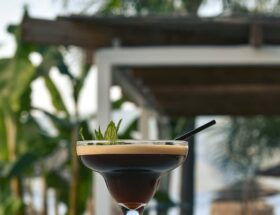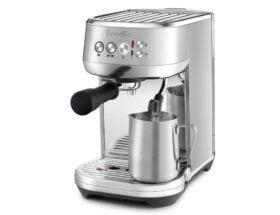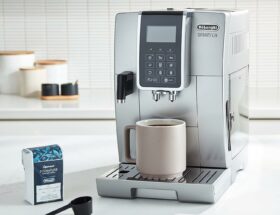
How to Create Malaysia’s Kopi: A Bold Kopitiam Coffee!
Can you hear the sizzle and clatter of a lively coffee shop, or as Malaysians like to call it, a ‘Kopitiam’? Do you savor the bold, strong taste of a perfectly brewed cup of coffee in the morning? If so, then you’re in for a treat! This blog is going to take you on a fascinating journey through the bustling lanes of Malaysia’s rich coffee culture, introducing you to the art of crafting their beloved Kopi.
Table of Contents
A Taste of Tradition: Unveiling Kopi
Kopi, a staple in Malaysian households and coffee shops, holds a special place in the hearts of locals and travelers alike. This unique coffee blend, coupled with Malaysia’s distinct preparation methods, offers a flavor profile that stands apart from your typical espresso or latte. Intrigued? Read on to discover more about this bold beverage that continues to redefine the country’s coffee scene.
A Bold Brew: An Interesting Fact about Kopi
Now, let’s spill the beans on an exciting fact about Kopi that many are unaware of! Unlike the standard coffee brewing process where beans are roasted with sugar to create a caramelized effect, Kopi takes a different route. The beans are actually roasted with margarine, creating a flavor and depth that’s truly one-of-a-kind. This technique gives Kopi its signature robust taste and intense aroma, leaving coffee lovers coming back for more!
Essential Equipment for Brewing Kopi: The Malaysian Way
Creating the perfect cup of Kopi requires more than just the right blend of beans. It requires the right set of tools. Here is a list of essential equipment you’ll need to brew your own Kopi:
- Kettle: For boiling your water. A gooseneck kettle is highly recommended as it gives you more control over the pour.
- Coffee Grinder: Freshly ground beans always make the best Kopi. A burr grinder is preferred over a blade grinder as it gives a more consistent grind.
- Coffee Sock: This is a traditional Malaysian filter made of cotton fabric. It is what gives the Kopi its unique texture and taste.
- Coffee Pot: Ideally made of clay or porcelain, this is where you’ll be brewing your Kopi.
- Thermometer: For checking water temperature. The ideal temperature for brewing Kopi is between 90 to 96 degrees Celsius.
Now that you have your equipment ready, let’s move on to the brewing process.
Step by Step Guide: Crafting Your Own Kopi
Creating your own Malaysian Kopi is an exhilarating journey into a world of rich flavors and aromatic experiences. Let us dive right into this step by step guide!
Gather Your Ingredients
For a potent Malaysian Kopi, you will need a dark roast coffee, condensed milk, and boiling water. The key to achieving the signature taste lies in the quality of the coffee beans, so don’t skimp here!
Prepare Your Coffee
Grind your coffee beans to a medium-fine consistency for a robust flavor. Use a generous amount to ensure your Kopi is bold and full-bodied.
Brewing the Perfect Kopi
Place the coffee grounds in a cloth filter or a French press. Pour boiling water over the coffee, allowing it to steep for a few minutes. The longer you let it steep, the stronger your Kopi will be.
Add the Condensed Milk
While your coffee is brewing, prepare your cup with a generous dollop of condensed milk. This adds a creamy, sweet contrast to the bitter coffee.
Combine and Enjoy
Pour your freshly brewed coffee over the condensed milk, stirring until combined. Now, sit back and savor your homemade Malaysian Kopi!
Remember, coffee is an art form that thrives on personalization. Don’t be afraid to tweak ratios and brewing times to suit your taste. The perfect Kopi is the one that you love!
Frequently Asked Questions
1. What is Kopi?
Kopi is an integral part of Malaysia’s vibrant coffee culture. It is a bold, robust, and full-bodied coffee, brewed using beans that have been meticulously roasted in margarine. The result? A rich and unique flavor profile that sets Kopi apart from your regular cup of joe.
2. What does Kopi taste like?
Imagine taking a sip of a coffee that is strong, aromatic, and with a distinctive taste that blends sweet and bitter perfectly. That’s Kopi for you! Its unique roasting process imbues it with a slight caramel and buttery taste, creating a coffee experience like no other.
3. How is Kopi traditionally prepared?
Creating Kopi is an art. The process begins with roasting coffee beans in a wok with margarine and sugar. The beans are then ground and brewed in a sock filter, producing a thick, aromatic coffee. It’s typically served with sweetened condensed milk, adding a creamy, sweet contrast to the bold coffee flavor.
4. What is the difference between Kopi and regular coffee?
While both are coffee at their core, the difference lies in the preparation and taste. Kopi is roasted with margarine and sugar and brewed using a sock filter. This gives it a distinct flavor and aroma, unlike regular coffee, which is often roasted without additives and brewed using various methods.
5. What is a Kopitiam?
A Kopitiam, a portmanteau of the Malay words ‘Kopi’ (coffee) and ‘Tiam’ (shop), is a traditional coffee shop found throughout Malaysia. They’re the heart and soul of Malaysia’s coffee culture, serving not only Kopi but also a variety of local dishes. Kopitiams are more than just eateries; they’re social hubs where people gather to chat, relax, and of course, enjoy their Kopi.
6. Where can I try Kopi?
The best place to try Kopi is undoubtedly at a local Kopitiam in Malaysia. However, don’t worry if you can’t make the trip! Many specialty coffee shops around the world are beginning to embrace Kopi, and you can also purchase Kopi beans online to brew your own at home.
7. Can I make Kopi at home?
Absolutely! Brewing Kopi at home is a rewarding experience. You’ll need Kopi beans, a sock filter, and sweetened condensed milk. The process might take a little practice, but with patience, you’ll be able to create your own bold, aromatic cup of Kopi.
8. How can I learn more about Malaysia’s coffee culture?
There’s a lot to explore when it comes to Malaysia’s coffee culture. From reading up on the history and tradition of Kopi, visiting Kopitiams, to trying your hand at brewing your own Kopi, there’s plenty to keep you engaged. Stay tuned to our blog for more insights and coffee tales from Malaysia!
Conclusion
There you have it – an exciting journey into the world of Kopi, a captivating segment of Malaysia’s unique coffee culture. We’ve navigated through bold blends and riveting tales from nostalgic Kopitiams, capturing the essence of the Malaysian coffee experience. As we conclude our exploration of this beguiling brew, let’s remember that every sip of Kopi is not just coffee, it’s a story!
Now that we’ve stirred your curiosity about the enchanting world of Kopi, why not join us at Ten Coffees and delve further into other explorations? Share your unique coffee tales and brewing techniques in the comments section below. We’re always eager to hear your caffeinated accounts and discover new methodologies together!
Remember, your voice adds rich authenticity to our vibrant coffee community. So go ahead, leave a comment now. Let’s continue brewing our collective coffee narrative!









